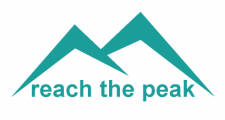Which tool you pick may depend on the size of the goal, what progress you’ve made so far, and what help you need. Below, I’ve outlined just a few of the different techniques and thought processes that you could use.
You can get help in a number of different ways:
- through a coaching session with someone else;
- by following one of the NLP Processes on your own;
- attending a personal development course like the NLP Practitioner or NLP Diploma.
A bit about Goals
Our goals often start in a similar way – as a dream. I’m not talking about a dream while we’re asleep (although this can produce some epiphany moments!)
I mean a day-dream – a thought of “Maybe, one day, I might……”
Many, many (so very many!) of these ideas stay exactly as this – a dream, an actionless wondering of how things might have been.
It’s not a goal until you’ve made a solid commitment to achieve it and taken the very first step.
NLP can help turn a dream into a goal, as well as to clarify slightly fuzzy goals to make them more achievable. Here’s a few processes that can help you achieve your goals using NLP:
Your values drive every decision you’ve ever made, from small decisions such s as which socks you choose to put on in the morning, up to the really big decisions such as careers, partners, where to live etc.
Your values will also determine if how successful you are at achieving your goals - if your goal is closely aligned to your personal values, something YOU think is really important, and will personally fulfil you, then you are much more likely to achieve it.
If you are chasing after a goal because someone else thinks it’s a good idea (parents and partners are key culprits in this!) Or because it’s what ‘society’ expects. Or because it will make you more money, or more status (despite not fitting in with who you really are.) In fact, if it's for any reason other than ‘I REALLY WANT IT!” then you’re unlikely to succeed.
Spending some time exploring your personal values, and ensuring your goals are aligned to them can be really valuable in success and achievement of those goals. (As well as just generally making your happier, because your goals are aligned with who you are and what’s important to you.)
2.The New Behaviour Generator
This is a simple NLP process (covered on the NLP Diploma/NLP Practitioner Module 1) which can introduce a new habit or behaviour in your life, where there is a trigger. I recently used this process to help me meet my goal of doing more crafting work (got Christmas presents to crotchet!) – I set an alarm for 8pm every night (the trigger) and that is the signal to start a new behaviour for me – putting my phone away, out of sight and out of reach – allowing for a new behaviour – doing something craft-related!
The process itself uses elements of visual rehearsal – seeing yourself doing something, then stepping into the picture and feeling yourself do it, as well as accessing the logical ideas part of your brain to refine the new behaviour you want to do. Any goal that involves doing something regularly can benefit from this process.
3.The Well-Formed Outcomes Process
The crème de la crème for goal-setting!
With hints of SMART goal setting, but so much richer and deeper, the well-formed outcomes process is a thorough process that enables you to think through your goal from all angles – stating clearly what you want (not what you DON’T want), considering when, where and who with, making it real for your senses by noticing what you’ll see, hear and feel when you’ve achieved it, considering barriers or costs that might get in the way, such as money, time, effort, and giving up other opportunities, considering how it aligns to you values, and the next step on the journey to achieving your goal (plus lots more!)
When I first did this process, it was on starting my own business. I casually put down that I wanted to do it within 3-5 years...fast-forward 3-5 months, and there I was having quit my corporate job and running my own business already! It’s a highly effective process!
4. PAW Process
When we set out to achieve a goal, there tends to be one of 3 mental barriers that stop us:
- Possibility – I don’t believe the goal is possible to achieve
- Ability – I don’t believe that I can do it
- Worthiness – I don’t believe I deserve to achieve it
Once you’ve discovered this, you can start to address it.
Possibility
If something has never been done before, you can struggle to know that its even possible. Eve if you’re trying your best, there’s this niggling doubt at the back of your head…
.
….“Is it even possible?”….
When big human endeavour records have been set in the world, often afterwards there is a surge in other people overtaking the record, or pushing themselves even further. Roger Bannister was the first man to run the 4-minute mile in April 1954 – a record that was being pursued by a number of other athletes at the same time, including John Landy, who is reported as saying he’d a 4.02-minute mile on six occasions in the two years prior but could never break the 4-minute barrier. Within 2 months of Roger Bannister’s new record, Landy was able to firstly run under 4 minutes, and secondly run at 3 minutes 57 seconds in June 1954.
A big part of this was likely down to the simple psychology that it was possible to run this fast. When we believe something is possible, we become far more likely to achieve it!
Ability
Once we believe its possible, the next mental barrier is believing that ‘I can do it.’
Now, it might be that an honest assessment of our abilities shows up that we need to learn an additional skill or do more training to reach the end goal, and that’s ok. The belief that we CAN and WILL do it eventually is what keeps us going.
If we are living under a cloud of doubt that we can actually achieve our goal in the end. it is likely to mean that we don’t put our full effort into it. This in turn makes it less likely to happen, because we haven’t put our full effort into it.
Or we don’t bother trying at all, because we are scared to fail. When we don’t try, then when we fail, we can make the excuse that we never really tried, and “I would have achieved it if I put my all into it” which saves us the potential embarrassment of having to admit we’ve fallen short of ability. We were just short on effort.
But what if we did fully, wholeheartedly believed we could do it? Fine, there’s a chance we may still not be successful, but we’ve got a huge amount more potential to achieve it if we believe we can. Even if we don’t fully achieve it, we’ll be much closer and much further forward than we were than if we simply didn’t try in the first place.
Worthiness
The final thing that holds us back is the belief that we simply aren’t worth it. At a deeper level, despite stating our desire, we feel don’t deserve the outcome that we so desperately want.
I’m not entirely sure what happens to us as humans, whether its parental influence, societal influence, school influence or simply just human nature, but this feeling seems alarmingly common for most people.
This can unfortunately hold us back from achieving goals that are otherwise perfectly possible and achievable. We put barriers and obstacles in our way and stack the deck against ourselves, for no obvious reason. It’s self-sabotage.
If we can truly, deeply believe that we deserve our goal, the final barrier to achieving it is overcome and we are on our way to success!
How does the PAW process help?
Understanding PAW can help us in different ways.
You can use it to establish which barrier is the challenge for us in achieving our goals.
As you think about your goal, say to yourself:
“It is possible”
“I can do it”
“I deserve it.“
As you say each one, notice any feelings, however slight, of uncomfortableness or unease.
This will point to where the obstacles and self-doubt lie.
Once you know which barrier(s) you’re dealing with, you can work towards overcoming it. This might involving working on changing your mindset about what is possible, improving your self-confidence about what you can achieve, or improving your self-worth.
Possibility – You cannot prove that something is impossible. All you can know is that you haven’t achieved it yet.
Ability – You probably haven’t reached the limit of what you are capable of yet…. Don’t boast about your limitation – you are simply reinforcing what probably isn’t true.
Worthiness - only you can decide whether you deserve to achieve your goal. As long as you can do a good ecology check on your goal: the impact it will have on you; the people around and the wider world, then this should catch any ethical or moral dilemmas. Wouldn’t it be nice to believe you are worthy of getting what you want?
You can also use the 3 statements as affirmations, or in NLP terms, as anchor phrases for helping you reach your goal.
“It is possible. I can do it. I deserve it.”
How can you achieve your goals using NLP?
So, there you have it – 4 ways that you can achieve your goal using NLP.
Which one will you try first?
If you’re interested in finding out more or want some help turning your dreams to reality, then please do get in touch at [email protected], or consider learning more on an NLP course in Edinburgh.



 RSS Feed
RSS Feed